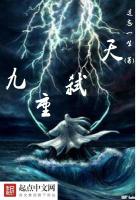The most remarkable of Hamilton's friendships in his early years was unquestionably that with Wordsworth. It commenced with Hamilton's visit to Keswick; and on the first evening, when the poet met the young mathematician, an incident occurred which showed the mutual interest that was aroused. Hamilton thus describes it in a letter to his sister Eliza:--"He (Wordsworth) walked back with our party as far as their lodge, and then, on our bidding Mrs. Harrison good-night, I offered to walk back with him while my party proceeded to the hotel. This offer he accepted, and our conversation had become so interesting that when we had arrived at his home, a distance of about a mile, he proposed to walk back with me on my way to Ambleside, a proposal which you may be sure I did not reject; so far from it that when he came to turn once more towards his home I also turned once more along with him. It was very late when I reached the hotel after all this walking."Hamilton also submitted to Wordsworth an original poem, entitled "It Haunts me Yet." The reply of Wordsworth is worth repeating:--"With a safe conscience I can assure you that, in my judgment, your verses are animated with the poetic spirit, as they are evidently the product of strong feeling. The sixth and seventh stanzas affected me much, even to the dimming of my eyes and faltering of my voice while I was reading them aloud. Having said this, I have said enough. Now for the per contra. You will not, I am sure, be hurt when I tell you that the workmanship (what else could be expected from so young a writer?) is not what it ought to be. . .
"My household desire to be remembered to you in no formal way.
Seldom have I parted--never, I was going to say--with one whom after so short an acquaintance I lost sight of with more regret. I trust we shall meet again."The further affectionate intercourse between Hamilton and Wordsworth is fully set forth, and to Hamilton's latest years a recollection of his "Rydal hours" was carefully treasured and frequently referred to. Wordsworth visited Hamilton at the observatory, where a beautiful shady path in the garden is to the present day spoken of as "Wordsworth's Walk."It was the practice of Hamilton to produce a sonnet on almost every occasion which admitted of poetical treatment, and it was his delight to communicate his verses to his friends all round. When Whewell was producing his "Bridgewater Treatises," he writes to Hamilton in 1833:--"Your sonnet which you showed me expressed much better than I could express it the feeling with which I tried to write this book, and Ionce intended to ask your permission to prefix the sonnet to my book, but my friends persuaded me that I ought to tell my story in my own prose, however much better your verse might be."The first epoch-marking contribution to Theoretical Dynamics after the time of Newton was undoubtedly made by Lagrange, in his discovery of the general equations of Motion. The next great step in the same direction was that taken by Hamilton in his discovery of a still more comprehensive method. Of this contribution Hamilton writes to Whewell, March 31st, 1834:--"As to my late paper, a day or two ago sent off to London, it is merely mathematical and deductive. I ventured, indeed, to call it the 'Mecanique Analytique' of Lagrange, 'a scientific poem'; and spoke of Dynamics, or the Science of Force, as treating of 'Power acting by Law in Space and Time.' In other respects it is as unpoetical and unmetaphysical as my gravest friends could desire."It may well be doubted whether there is a more beautiful chapter in the whole of mathematical philosophy than that which contains Hamilton's dynamical theory. It is disfigured by no tedious complexity of symbols; it condescends not to any particular problems;it is an all embracing theory, which gives an intellectual grasp of the most appropriate method for discovering the result of the application of force to matter. It is the very generality of this doctrine which has somewhat impeded the applications of which it is susceptible. The exigencies of examinations are partly responsible for the fact that the method has not become more familiar to students of the higher mathematics. An eminent professor has complained that Hamilton's essay on dynamics was of such an extremely abstract character, that he found himself unable to extract from it problems suitable for his examination papers.
The following extract is from a letter of Professor Sylvester to Hamilton, dated 20th of September, 1841. It will show how his works were appreciated by so consummate a mathematician as the writer:--"Believe me, sir, it is not the least of my regrets in quitting this empire to feel that I forego the casual occasion of meeting those masters of my art, yourself chief amongst the number, whose acquaintance, whose conversation, or even notice, have in themselves the power to inspire, and almost to impart fresh vigour to the understanding, and the courage and faith without which the efforts of invention are in vain. The golden moments I enjoyed under your hospitable roof at Dunsink, or moments such as they were, may probably never again fall to my lot.














